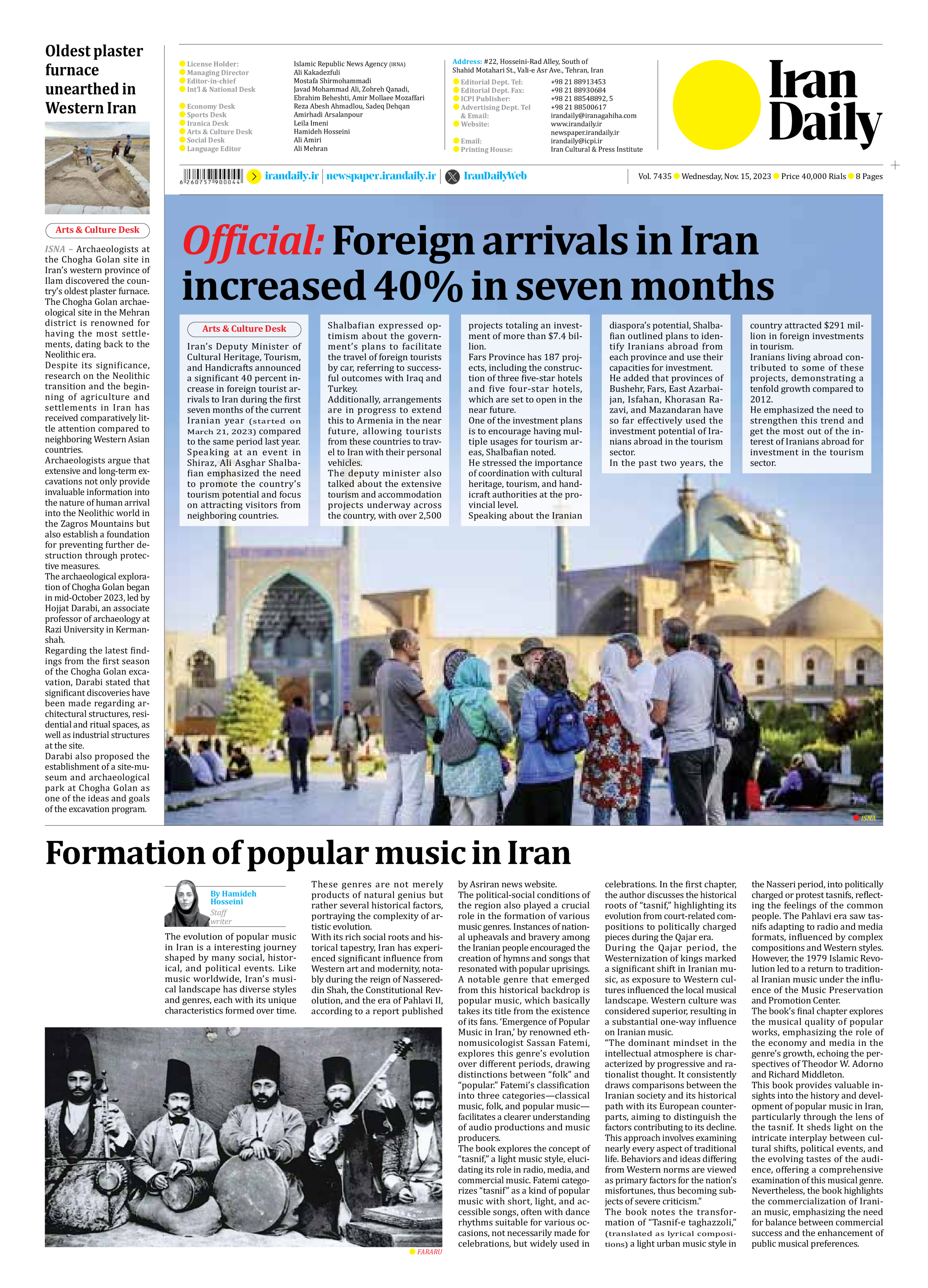
Formation of popular music in Iran
By Hamideh Hosseini
Staff writer
The evolution of popular music in Iran is a interesting journey shaped by many social, historical, and political events. Like music worldwide, Iran’s musical landscape has diverse styles and genres, each with its unique characteristics formed over time. These genres are not merely products of natural genius but rather several historical factors, portraying the complexity of artistic evolution.
With its rich social roots and historical tapestry, Iran has experienced significant influence from Western art and modernity, notably during the reign of Nassereddin Shah, the Constitutional Revolution, and the era of Pahlavi II, according to a report published by Asriran news website.
The political-social conditions of the region also played a crucial role in the formation of various music genres. Instances of national upheavals and bravery among the Iranian people encouraged the creation of hymns and songs that resonated with popular uprisings.
A notable genre that emerged from this historical backdrop is popular music, which basically takes its title from the existence of its fans. ‘Emergence of Popular Music in Iran,’ by renowned ethnomusicologist Sassan Fatemi, explores this genre’s evolution over different periods, drawing distinctions between “folk” and “popular.” Fatemi’s classification into three categories—classical music, folk, and popular music—facilitates a clearer understanding of audio productions and music producers.
The book explores the concept of “tasnif,” a light music style, elucidating its role in radio, media, and commercial music. Fatemi categorizes “tasnif” as a kind of popular music with short, light, and accessible songs, often with dance rhythms suitable for various occasions, not necessarily made for celebrations, but widely used in celebrations. In the first chapter, the author discusses the historical roots of “tasnif,” highlighting its evolution from court-related compositions to politically charged pieces during the Qajar era.
During the Qajar period, the Westernization of kings marked a significant shift in Iranian music, as exposure to Western cultures influenced the local musical landscape. Western culture was considered superior, resulting in a substantial one-way influence on Iranian music.
“The dominant mindset in the intellectual atmosphere is characterized by progressive and rationalist thought. It consistently draws comparisons between the Iranian society and its historical path with its European counterparts, aiming to distinguish the factors contributing to its decline. This approach involves examining nearly every aspect of traditional life. Behaviors and ideas differing from Western norms are viewed as primary factors for the nation’s misfortunes, thus becoming subjects of severe criticism.”
The book notes the transformation of “Tasnif-e taghazzoli,” (translated as lyrical compositions) a light urban music style in the Nasseri period, into politically charged or protest tasnifs, reflecting the feelings of the common people. The Pahlavi era saw tasnifs adapting to radio and media formats, influenced by complex compositions and Western styles. However, the 1979 Islamic Revolution led to a return to traditional Iranian music under the influence of the Music Preservation and Promotion Center.
The book’s final chapter explores the musical quality of popular works, emphasizing the role of the economy and media in the genre’s growth, echoing the perspectives of Theodor W. Adorno and Richard Middleton.
This book provides valuable insights into the history and development of popular music in Iran, particularly through the lens of the tasnif. It sheds light on the intricate interplay between cultural shifts, political events, and the evolving tastes of the audience, offering a comprehensive examination of this musical genre. Nevertheless, the book highlights the commercialization of Iranian music, emphasizing the need for balance between commercial success and the enhancement of public musical preferences.







